Use it or lose it—the same rule applies to many things, and your physical ability is no different. From your bones to cartilage to tendons to muscle to brain and more—your body slows and declines from its physical peak (around 30) as it ages. Now, it's best if you don't sit idly by. And many Singaporeans take action—we hike, run, cycle and more! You probably do at least one of the activities above. But strength training is likely a missing piece in your health and fitness puzzle. Fit it in, and you can steer yourself onto the path of ageing well. Adding grease to your metaphorical wheels to keep them turning and making yourself more resilient to the bumps and knocks from life and sports
Strength training is also known as resistance training and is synonymous with going to the gym and lifting weights. You know—pumping iron. However, you can strength train in a variety of ways. Here are three examples of strength training:
- Weights (e.g., dumbbells, barbells, kettlebells, weight machines)
- Resistance bands
- Bodyweight exercises (e.g., push-ups, pull-ups)
While gyms can give you access to heavier weights, that can make you stronger, you should focus on doing movements with proper form before worrying about heavier weights—or more resistance. Even without a gym, everyone should do some strength training than none. With some creativity, you can get stronger just about anywhere—anytime.
Strength training’s health benefits
You may have heard of sarcopenia (loss of muscle mass) and osteoporosis (decrease in bone density). Your body hits its physical peak around 30. Still, the adverse effects of the two diseases are often only more noticeable later in life. The good news? Strength training slows the loss of muscle mass and bone density and is undoubtedly the best way to keep the two diseases at bay.
Then there are the cognitive (brain) benefits of improving blood circulation and keeping your mind switched on while training. The hippocampus, the part of the brain associated with learning and memory, is among the first parts of the brain to be affected by Alzheimer's disease or dementia. Like every other body part, your brain stays healthy when work and rest balance. As seniors, you may attend fewer social gatherings and couple with retirement, the opportunities for mental stimulation decline. So, why not fill your free time with physical activities to stay strong and healthy?
Need more reasons to lift some weight? Strength training, like any other physical activity, improves your overall health—and reduces the risk of or helps control diseases related to a sedentary lifestyle (e.g., diabetes, cardiovascular and stroke). The list of benefits goes on and on.
Debunking resistance training myths
The myths and misconceptions surrounding resistance training are aplenty. But here are a few of the common ones that you have likely come across:
Lifting weights will make you bulky, slow and inflexibleAchieving the physiques of the weightlifters, bodybuilders, and other strength athletes you may have seen pictures of takes years of dedication and planning in and out of the gym. As for being slow and inflexible, strength training does quite the opposite. Being strong improves your reflexes, and performing a variety of exercises keeps you limber.
Muscle will turn to fat when you stop strength trainingThat's not how your body works. Muscle does not turn into fat. This myth likely stems from seeing people who used to visit the gym regularly but become overweight when fitness takes a backseat.
It’s easy to get hurt lifting weightsStrength training without the proper knowledge and with poor form increases the chances of getting hurt. However, strength training progressively (i.e., starting with the basics and increasing complexity over time) is extremely safe—and reduces your risk of injury.
Get strong safely
You have to walk before you run. And if you're new to strength training, keep it simple. Here are some fundamental movements:
Push-up
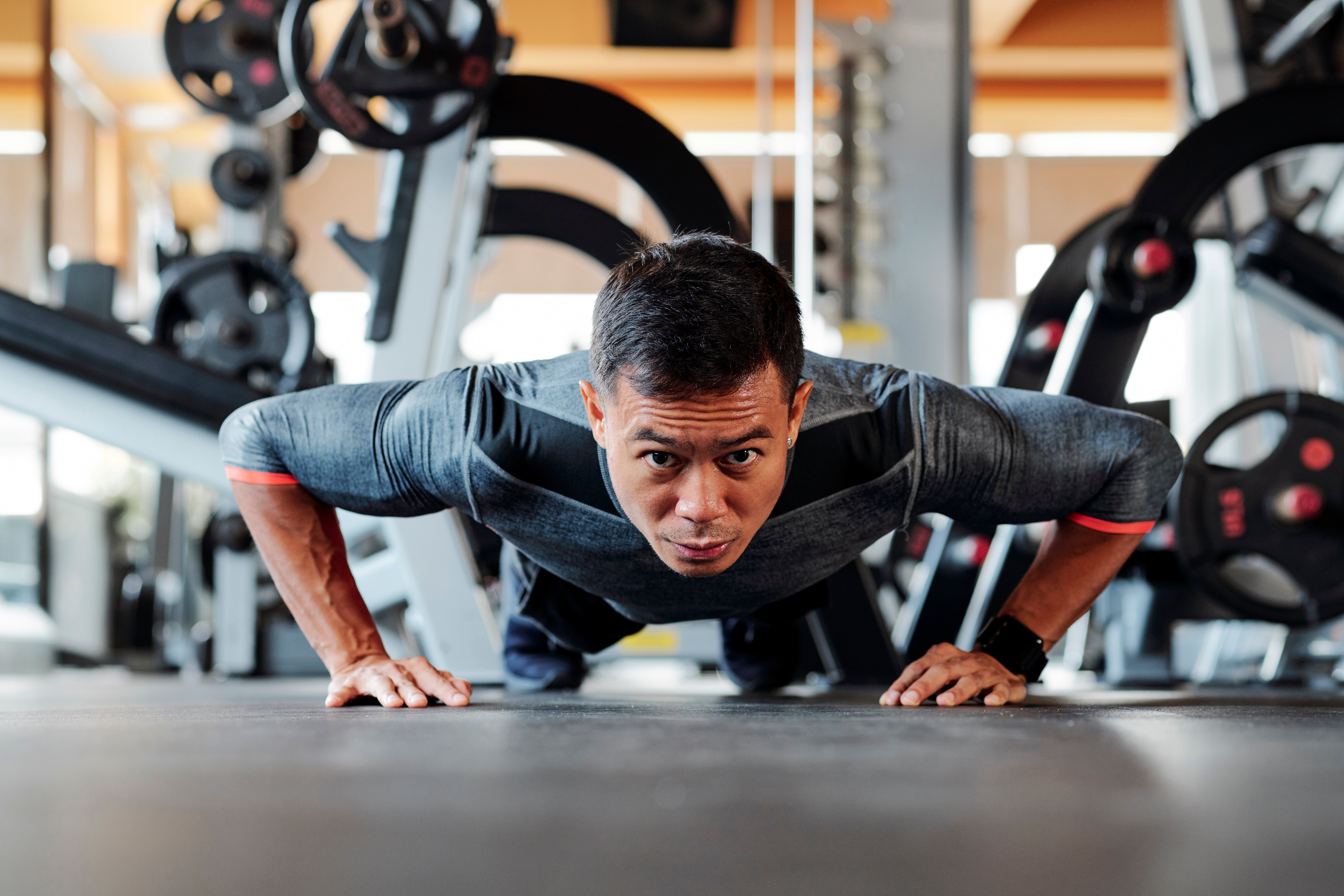
Make it easier by placing your knees on the ground or do wall push-ups
Tip: Pad your knees from the ground with a folded towel if you don’t have an exercise mat.
Pull-up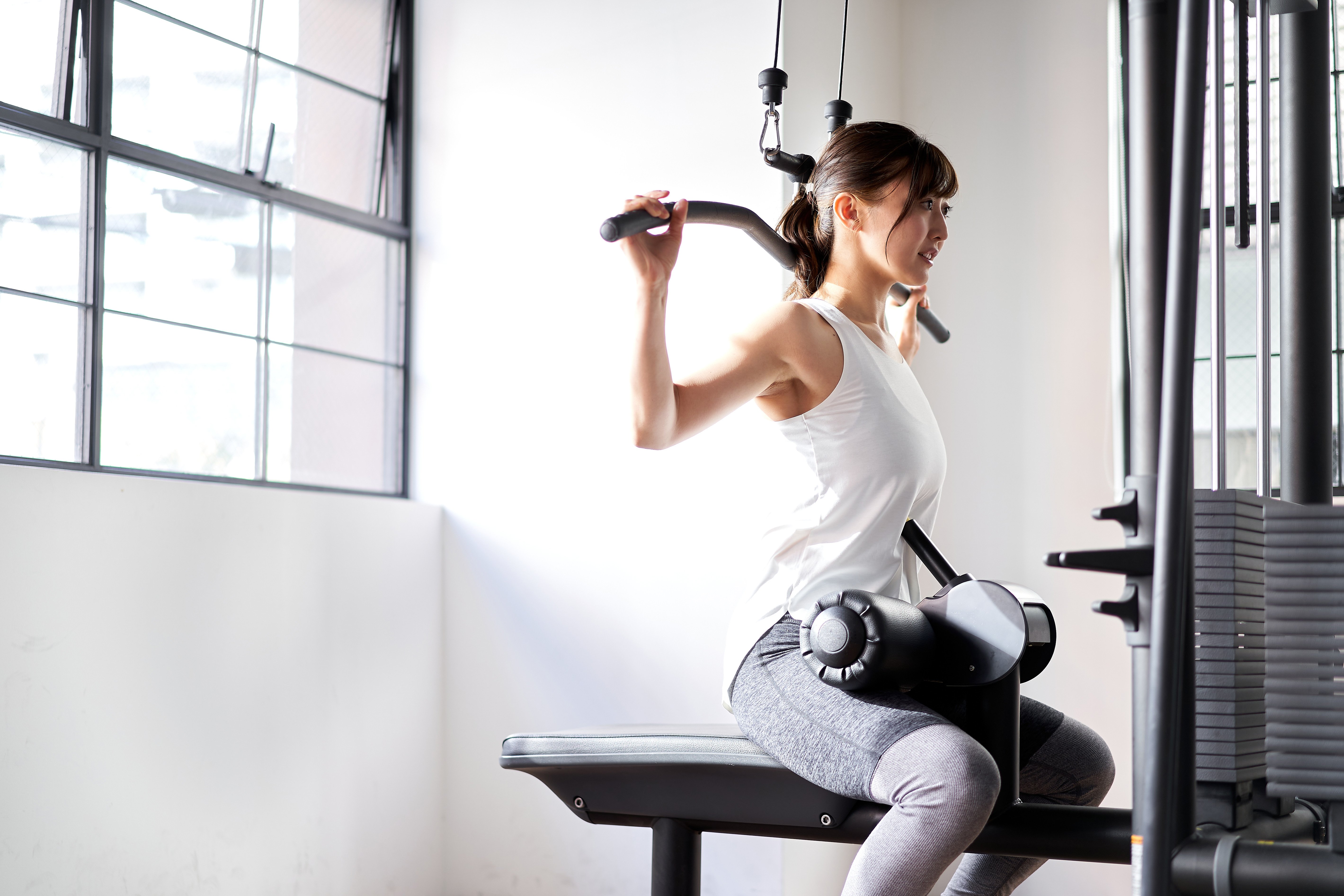
The inclined pull-up is an easier variation of the standard pull-up. Check out your neighbourhood park or fitness corner, or visit an ActiveSG and use the lat pull-down machine.
Tip: Try to lower yourself slowly to increase the challenge.
Squat
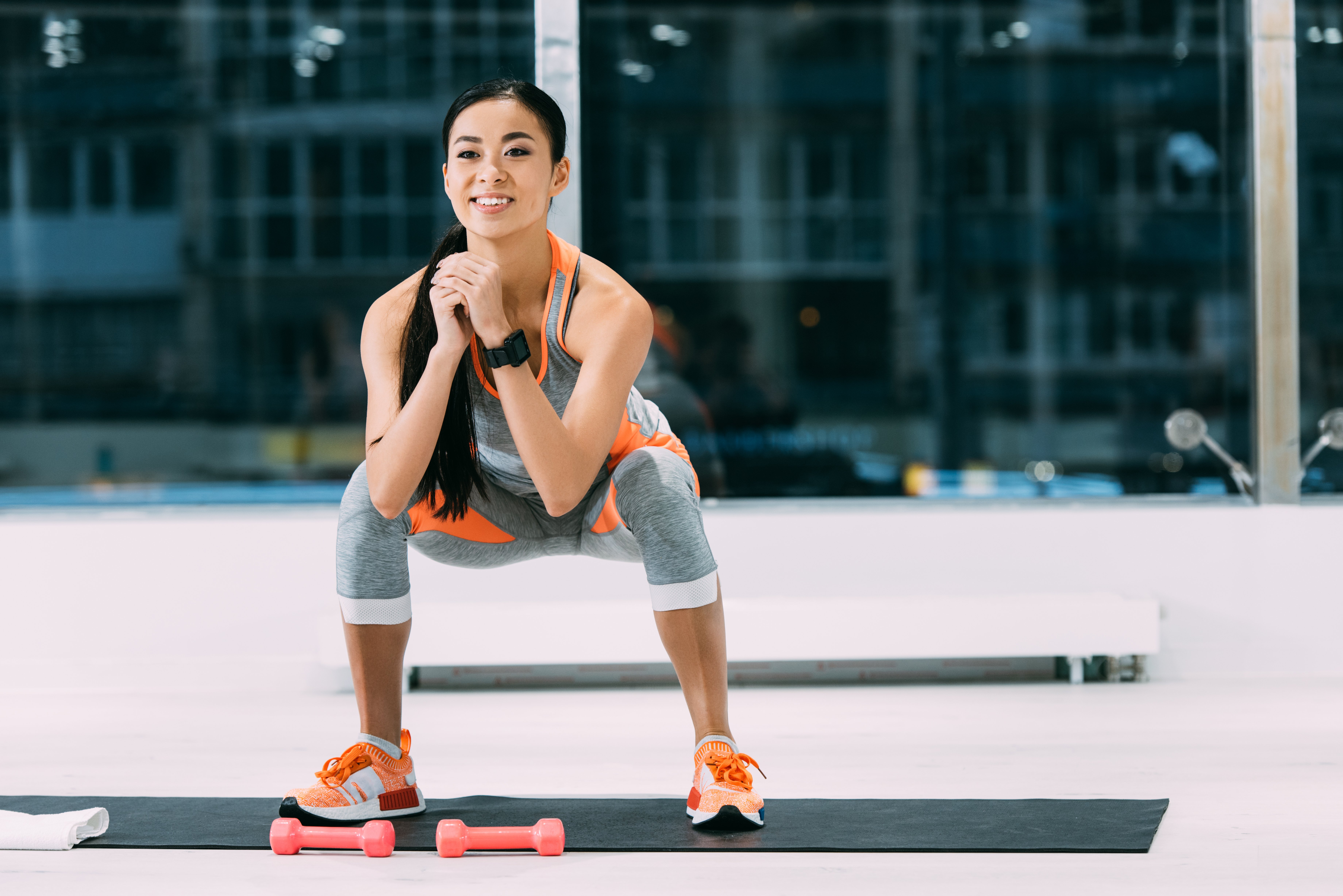
Sit and stand from an elevated surface (e.g., a chair) and find lower surfaces to progress. Aim to squat as low as you can, with your toes and heels firmly on the ground, without a surface to sit on.
Tip: Carry a small backpack and place filled water bottles in for an added challenge.
Deadlift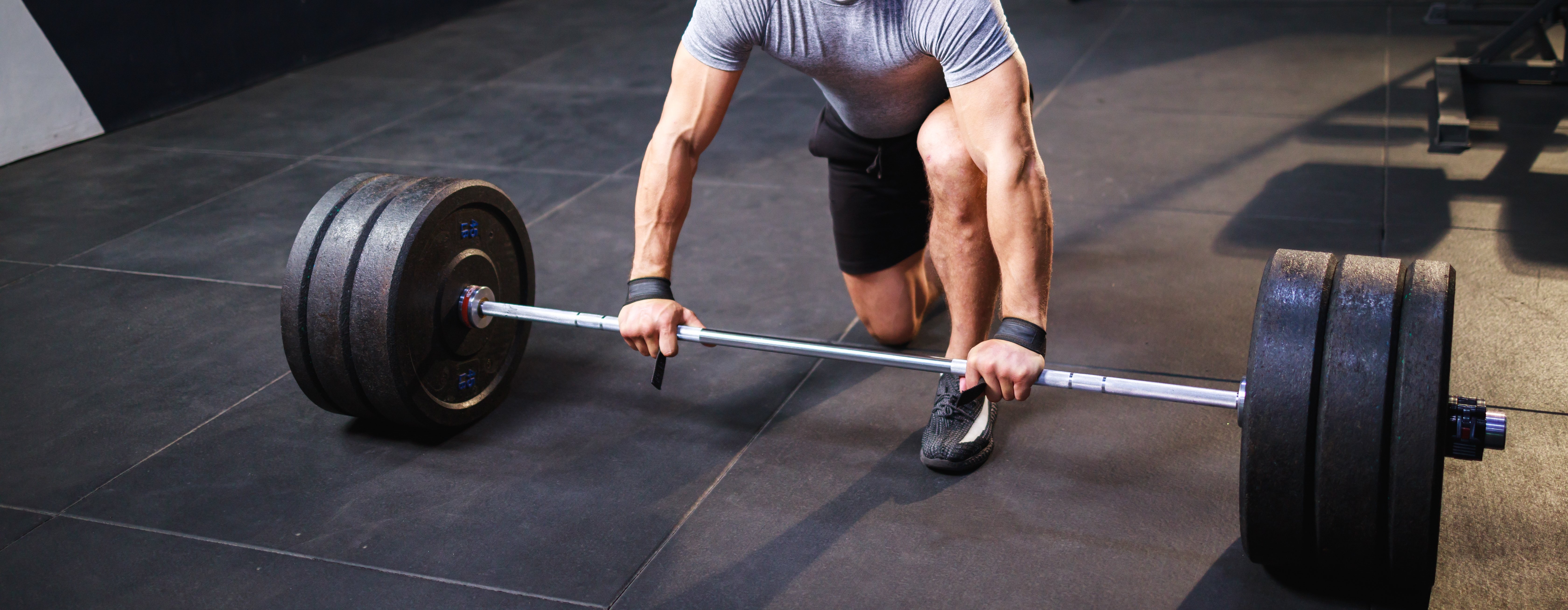
Pick up a weight, then set it down. Focus on the hip-hinge, a fundamental movement for moving well. Start by carrying groceries or household items, and consider visiting your local ActiveSG gym for heavier weights.
Tip: Use a sturdy bag to adjust the weight by adding or removing items.
To add strength training to your exercise routine, try doing it three days a week or every alternate day. The day in between gives your body time to recover and rebuild muscle.
Here’s what a simple weekly exercise routine can look like
|
Monday |
Tuesday |
Wednesday |
Thursday |
Friday |
Saturday |
Sunday |
|
Strength training |
Aerobic activity |
Strength training |
Aerobic activity |
Strength training |
Aerobic activity |
Rest |
With its many positive preventative effects, everyone should do some strength training, especially free weights, to improve their body's tolerance and resilience—even if you're already running, hiking or doing other activities regularly.
Still trying to figure it out? Check out ActiveSG programmes and ActiveSG Circle event listings to find out things you can do to be active!
Disclaimer
- Seek the advice of a qualified fitness professional or doctor before beginning any exercise programme
Free entry to all ActiveSG gyms and swimming pools for Singaporeans aged 65 and above. Toa Payoh Sport Centre has closed on 31 October 2023 to make way for the construction of a new Regional Sport Centre, as part of the Toa Payoh Integrated Development project (TPID). Please click here for the location of the ActiveSG Sport Centres.





![ActiveSG Academies and Clubs Logo (Solid Colour)[8647]](https://www.activesgcircle.gov.sg/hs-fs/hubfs/ActiveSG%20Circle%202023Theme/images/ActiveSG%20Academies%20and%20Clubs%20Logo%20(Solid%20Colour)%5B8647%5D.png?width=150&height=65&name=ActiveSG%20Academies%20and%20Clubs%20Logo%20(Solid%20Colour)%5B8647%5D.png)



-01.png?width=200&height=141&name=Team%20Singapore%20Logo%20(Red)-01.png)




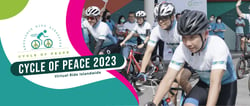







.jpg?width=250&height=250&name=CQ@Clarke%20Quay%20Poster.jpg%20(400x400px).jpg)
.png?width=250&height=250&name=CCE%2024%20April%20Coaching%20as%20a%20way%20of%20Life%20From%20(400%20x%20400%20px).png)

